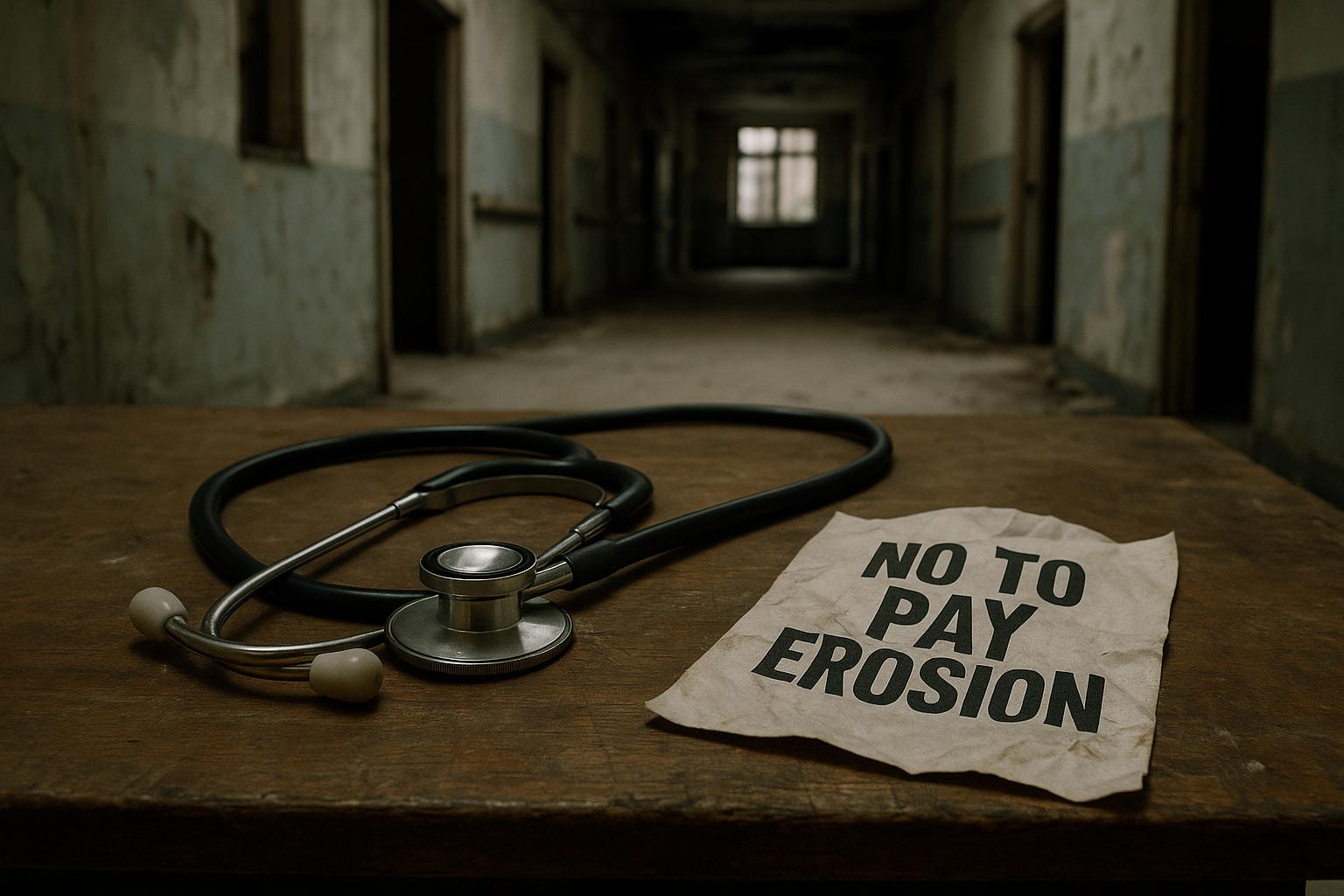First year resident doctors in England have overwhelmingly voted in favour of striking amid escalating disputes over job security and pay, signalling potential NHS disruption lasting up to six months. According to the British Medical Association (BMA), 97 percent of those balloted supported industrial action, marking a sharp stance by doctors who face uncertainty about their future employment and a long-standing decline in real-term salary value.
The BMA revealed that a significant portion of resident doctors—34 percent in their first year and over half of those in their second year—reported having no substantive employment or regular work secured beyond August 2025. This alarming outlook compounds the already serious issues surrounding pay, which doctors say has suffered a 21 percent real-terms erosion since 2008 when adjusted by the Retail Price Index (RPI). The BMA stresses that this pay decline undermines doctors’ financial stability, especially given their large student debts often indexed to the RPI.
Dr Jack Fletcher, chair of the BMA's resident doctors committee, emphasised the paradox of a workforce constrained by insecurity at a time of soaring demand for medical care. He highlighted that thousands of qualified doctors are unable to secure the work necessary to address long NHS waiting lists or increase patient capacity. Reflecting on government commitments, Dr Fletcher criticised the NHS 10 Year Plan for proposing merely 1,000 additional training places despite facing an applicant pool 20,000 strong beyond available spots. He urged the government to address pay and job security together, warning that strike action will proceed if remedies are not found.
Currently, a contrasting government stance makes the situation more complex. Using the Consumer Prices Index (CPI), which generally reports lower inflation than the RPI, the government argues that resident doctors’ pay is fair, with analysis from the Nuffield Trust suggesting a 5 percent pay fall since 2008 rather than the BMA's higher figures. A government pay offer tables a 4.05 percent raise backdated to April 2023 and a proposed 6 percent increase plus £1,000 for 2024-2025, alongside plans to adopt the term "resident doctors" officially to better reflect their professional status. However, the BMA is clear that these proposals fall short of full pay restoration.
The ongoing dispute has already seen resident doctors undertake 12 rounds of industrial action since 2023, severely impacting NHS services and causing about 1.5 million appointment cancellations. Public opinion appears divided: a YouGov poll found 48 percent of Britons oppose strike action by resident doctors, while 39 percent support it—a notable shift from last summer’s majority support.
Financially, resident doctors earn a basic salary starting at £38,831 in their first foundation year and rising to £44,439 in the second year, with progression to around £70,000 after eight or more years. Many doctors are expected to work irregular hours, including night shifts and weekends, compensated with additional pay. Comparatively, debates continue over how their wages stack against other public sector roles and the financial viability of proposed increases for the NHS.
This industrial dispute unfolds in the shadow of recent agreements with senior doctors, who achieved a pay deal after a year of strikes, including targeted pay raises for consultants and improvements to parental leave and gender pay equality within the NHS. Yet, the unresolved tensions with resident doctors underline ongoing challenges in retaining and fairly compensating the next generation of medical professionals critical to the UK’s healthcare future.
The BMA’s latest ballot signals a readiness to escalate industrial action unless the government embraces comprehensive reforms addressing both job security and pay equity. This moment illustrates the clash between workforce sustainability and fiscal constraints facing the NHS, with doctors demanding respect for their vital role amid enduring pressures on the health service.
📌 Reference Map:
- Paragraph 1 – [1], [4]
- Paragraph 2 – [1]
- Paragraph 3 – [1], [4], [5]
- Paragraph 4 – [1], [6]
- Paragraph 5 – [1], [4], [5]
- Paragraph 6 – [1], [2]
- Paragraph 7 – [1], [7]
- Paragraph 8 – [1], [4], [5], [6]
Source: Noah Wire Services
